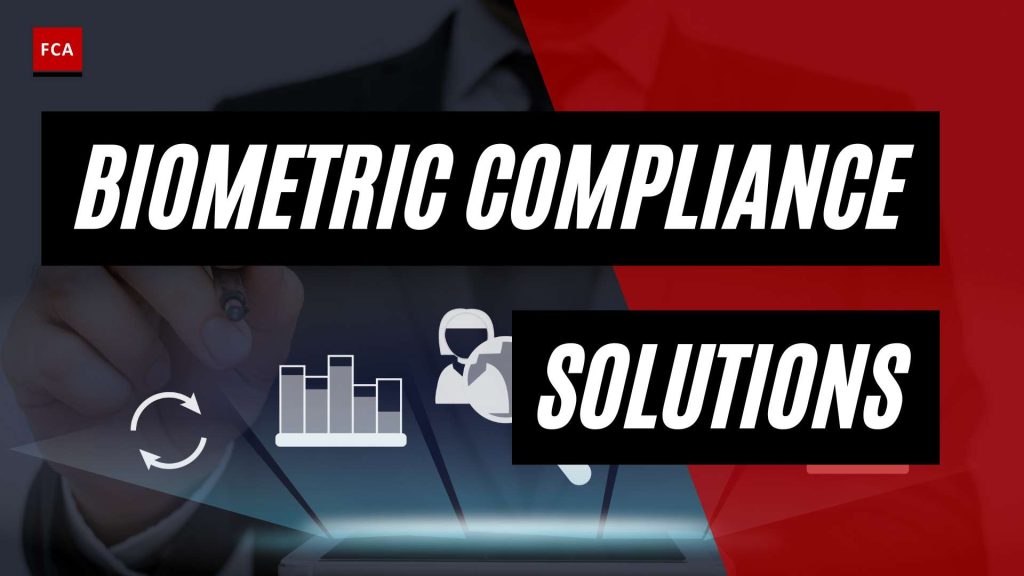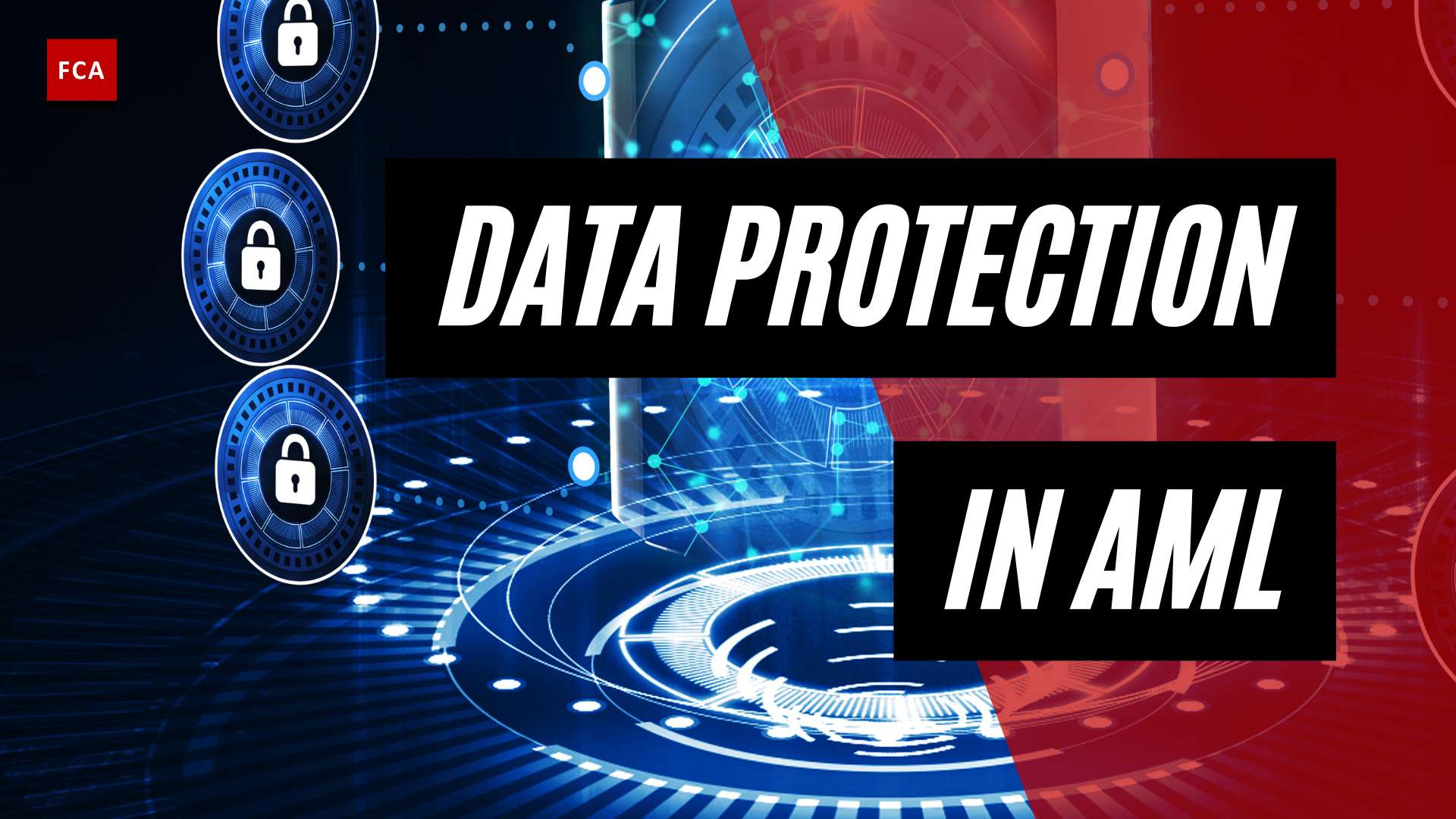Biometric Verification Technologies in Anti-Money Laundering
As part of the efforts to combat money laundering and ensure compliance with regulations, biometric verification technologies are increasingly being utilized. These technologies provide a robust and secure method of identifying individuals and verifying their identities. In this section, we will explore the introduction to biometric verification and the advantages of biometric compliance solutions.
Introduction to Biometric Verification
Biometric verification refers to the use of unique physical or behavioral characteristics to confirm an individual’s identity. It involves capturing and analyzing these characteristics to establish a reliable and distinct identification. Biometric data commonly used for verification includes facial features, fingerprints, iris patterns, and voiceprints.
Biometric verification offers several advantages over traditional identification methods such as passwords or PINs. Biometric characteristics are inherently difficult to forge or replicate, providing a higher level of security and reducing the risk of identity theft. Additionally, biometric verification methods are more convenient and user-friendly, eliminating the need to remember complex passwords or carry physical identification documents.
Advantages of Biometric Compliance Solutions
Biometric compliance solutions offer numerous benefits in the context of anti-money laundering (AML) efforts. Some of the key advantages include:
-
Enhanced Security: Biometric verification technologies provide a higher level of security compared to traditional identification methods. Biometric characteristics are unique to each individual, making it extremely difficult for fraudsters to impersonate someone else’s biometric data. This significantly reduces the risk of unauthorized access and fraudulent activities.
-
Improved Accuracy: Biometric compliance solutions offer a high level of accuracy in verifying an individual’s identity. By analyzing unique biometric features, these solutions can ensure that the person being verified is indeed who they claim to be. This accuracy reduces the chances of false positives or false negatives, enhancing the overall effectiveness of AML efforts.
-
Streamlined Compliance: Biometric verification technologies streamline the compliance process by automating identity verification and authentication. This enables financial institutions and organizations to efficiently comply with regulatory requirements related to customer due diligence, identity verification, and watchlist screening. By integrating biometric compliance solutions into their systems, organizations can enhance their AML practices and ensure compliance with regulatory standards.
-
Reduced Operational Costs: Implementing biometric compliance solutions can lead to cost savings for organizations. These solutions automate the identity verification process, reducing the need for manual verification and associated labor costs. Moreover, the accuracy and effectiveness of biometric verification help prevent fraudulent activities, potentially saving financial institutions from costly legal and reputational consequences.
By embracing biometric verification technologies as part of their AML strategies, organizations can bolster their compliance efforts, enhance security, and streamline operations. The use of biometric compliance solutions is not limited to the financial sector, as these technologies find applications in various industries, including healthcare, government, and travel. To explore the implementation of biometric compliance solutions in different industries, continue reading in the section on Biometric Compliance Solutions in Different Industries.
Types of Biometric Verification Technologies
Biometric verification technologies play a crucial role in ensuring secure and reliable identification and authentication processes. These technologies utilize unique physical or behavioral traits of individuals to verify their identity. In the context of biometric compliance solutions, there are several types of biometric verification technologies commonly used. These include facial recognition technology, fingerprint recognition technology, iris recognition technology, and voice recognition technology.
Facial Recognition Technology
Facial recognition technology analyzes and identifies unique facial features to verify an individual’s identity. It captures facial patterns, such as the distance between the eyes, the shape of the nose, and the contours of the face. Facial recognition has gained popularity due to its non-intrusive nature and ease of use. It is widely used in various industries, including law enforcement, access control, and mobile device authentication.
Advancements in facial recognition technology have made it more accurate and reliable. It can now detect and match faces in real-time, even under different lighting conditions and angles. Additionally, facial recognition technology can be combined with other biometric modalities to create multi-modal biometric systems for enhanced accuracy and security.
Fingerprint Recognition Technology
Fingerprint recognition technology is one of the oldest and most widely used biometric verification methods. It relies on capturing and analyzing the unique patterns and ridges present on an individual’s fingertips. Fingerprint recognition is highly accurate and has been extensively used in various applications, including border control, criminal identification, and access control systems.
The uniqueness and consistency of fingerprints make them an ideal biometric identifier. Fingerprint recognition technology can quickly and accurately match fingerprints against a database of enrolled individuals. It is also resistant to spoofing, as replicating an individual’s fingerprint is extremely challenging with current technology.
Iris Recognition Technology
Iris recognition technology utilizes the unique patterns in the colored part of the eye, known as the iris, to verify an individual’s identity. The iris is a stable biometric trait that remains unchanged throughout a person’s lifetime. This makes iris recognition highly accurate and reliable.
Iris recognition systems capture high-resolution images of the iris and use advanced algorithms to analyze and match the patterns against a database. The technology is widely employed in areas where high-security levels are required, such as airport security, national ID programs, and restricted access facilities. Iris recognition is also contactless, making it hygienic and convenient for users.
Voice Recognition Technology
Voice recognition technology analyzes and verifies an individual’s voice patterns for authentication purposes. It involves the capture and analysis of various voice characteristics, including pitch, tone, cadence, and pronunciation. Voice recognition is commonly used in telephone banking, voice-controlled systems, and voice biometrics.
Advancements in voice recognition technology have made it more robust and accurate, even in noisy environments. Voice recognition can be used as a standalone biometric verification method or in combination with other biometric modalities for multi-factor authentication.
Each of these biometric verification technologies offers unique advantages and capabilities. The choice of technology depends on factors such as the level of security required, user convenience, and the specific application or industry. By leveraging these technologies, organizations can enhance their compliance measures and strengthen their anti-money laundering (AML) and know-your-customer (KYC) practices.
Implementation of Biometric Compliance Solutions
Implementing biometric compliance solutions involves addressing various challenges and ensuring the integrity and security of biometric data. This section focuses on the integration challenges and solutions, testing and validation processes, and the importance of data integrity and security in biometric compliance.
Integration Challenges and Solutions
The integration of biometric hardware into existing systems and applications can present certain challenges. These challenges include issues related to hardware installation, configuration, troubleshooting, and maintenance. For example, the installation of appropriate drivers and the communication between the system and the biometric scanner device can pose challenges (Aratek).
To overcome these challenges, it is crucial to ensure proper support for the integration process. This includes providing comprehensive documentation, technical assistance, and training for system administrators and users. Additionally, selecting reliable biometric hardware providers who offer excellent customer support can help streamline the integration process and resolve any issues that may arise.
Testing and Validation Processes
To ensure the reliability, flexibility, and functionality of biometric compliance solutions, thorough testing and validation processes are essential. These processes involve rigorous examination of the system’s performance, compatibility, and accuracy.
Testing should encompass various scenarios and conditions to simulate real-world usage. This includes testing the system’s response to different environmental factors, such as lighting conditions and variations in user positioning. Additionally, compatibility testing should be conducted to ensure seamless integration with existing software and hardware components.
Validation processes should verify the accuracy of the biometric system in correctly identifying individuals and authenticating their identities. This involves comparing the biometric data captured by the system against known reference data to determine the system’s effectiveness.
By conducting comprehensive testing and validation, potential issues and vulnerabilities can be identified and addressed before the biometric compliance solution is fully implemented, ensuring optimal performance and reliability.
Ensuring Data Integrity and Security
Data integrity and security are paramount when implementing biometric compliance solutions. Safeguarding high-quality, reliable, and accurate biometric data is crucial to maintaining the integrity of the system and protecting users’ privacy.
To ensure data integrity, stringent standards and practices should be implemented throughout the system’s lifecycle. This includes secure storage and transmission of biometric data, encryption mechanisms to protect sensitive information, and secure protocols for data access and retrieval.
Furthermore, implementing robust authentication and authorization mechanisms is essential to prevent unauthorized access to biometric data. Access controls should be implemented at both the physical and logical levels to ensure that only authorized individuals have access to the biometric compliance system and the stored data.
Regular security audits, vulnerability assessments, and updates to the system’s software and hardware components are also important to address emerging threats and maintain the security of the biometric compliance solution.
By prioritizing data integrity and security, organizations can instill trust in biometric compliance solutions and ensure the protection of individuals’ biometric data.
In the next sections, we will explore the application of biometric compliance solutions in various industries, including the healthcare industry, finance and banking sector, travel and hospitality industry, and government applications.
Biometric Compliance Solutions in Different Industries
Biometric compliance solutions have been rapidly transforming various industries, providing secure and efficient methods of identification and verification. Let’s explore their applications in the healthcare industry, finance and banking sector, travel and hospitality industry, and government applications.
Healthcare Industry
In the healthcare industry, biometric compliance solutions are gaining traction to ensure secure access to patient data and enhance overall security measures. Fingerprint and facial recognition are among the most common forms of biometric identification used in this sector. With these solutions, healthcare providers can accurately authenticate patients, ensuring that only authorized individuals have access to sensitive medical records. This helps safeguard patient privacy and prevent unauthorized access to healthcare systems and data (Aware).
Finance and Banking Sector
The finance and banking sector has been at the forefront of adopting biometric compliance solutions to enhance security and combat fraud. Biometric authentication provides a reliable and convenient method for customer identification and verification. Fingerprint, facial, and voice recognition technologies are being utilized to ensure secure customer authentication, protecting against unauthorized access to financial accounts and transactions. These solutions not only enhance security but also improve the user experience by providing a seamless and efficient authentication process (Aware).
Travel and Hospitality Industry
Biometric compliance solutions are revolutionizing the travel and hospitality industry, streamlining passenger identification processes and enhancing security. Through the use of biometric technologies such as facial recognition, airports and hotels can provide a seamless and touchless experience for travelers, reducing wait times and improving overall travel experiences. These solutions enable faster and more accurate identity verification, ensuring a smooth and secure journey for passengers (Aware).
Government Applications
Governments worldwide are adopting biometric compliance solutions to enhance border security, immigration control, law enforcement, and citizen identification programs. Biometric technologies such as fingerprint, facial, and iris recognition are being utilized to establish unique identities and accurately verify individuals. These solutions enable more efficient and secure processes for identification, background checks, and watchlist screening, contributing to improved security and effective governance (Aware).
Biometric compliance solutions are revolutionizing a wide range of industries, providing enhanced security, improved efficiency, and seamless user experiences. As technology continues to advance, these solutions will play an increasingly vital role in ensuring secure and reliable identification and verification processes across various sectors.
Biometric Authentication in Cybersecurity
In the realm of cybersecurity, implementing biometric authentication technology offers numerous advantages over traditional password-based systems. Biometric authentication relies on unique physical or behavioral characteristics of individuals, such as facial features, fingerprints, iris patterns, or voice qualities, to establish identity and grant access to secure systems. Let’s explore the advantages and disadvantages of biometric authentication, as well as its cost-effectiveness and impact on user experience.
Advantages of Biometric Authentication
Biometric authentication provides a more secure layer for cybersecurity, as the physical or behavioral features used for identification are challenging to fake or replicate. According to a Verizon report, almost 75% of data breaches involve human error, misuse, social engineering attacks, or stolen credentials, emphasizing the need to move away from traditional passwords for enhanced security (ISAGCA Blog). By utilizing biometric authentication systems, organizations can significantly reduce the risk of unauthorized access and identity fraud.
Additionally, biometric authentication offers a more convenient and user-friendly experience. Users no longer need to remember complex passwords or security keys, as their unique biometric features serve as their credentials. This streamlines the authentication process, making it seamless and efficient, which enhances user satisfaction and productivity.
Disadvantages of Biometric Authentication
While biometric authentication has numerous advantages, it also has a few limitations. One major concern is the potential for biometric data to be compromised. As biometric features are unique to individuals, if this data falls into the wrong hands, it can be difficult to change or replace. Organizations must implement robust data storage and protection measures to safeguard biometric information and ensure privacy.
Another challenge is the potential for false positives or false negatives. Biometric authentication systems may occasionally misidentify individuals due to factors such as changes in appearance, environmental conditions, or equipment limitations. Organizations need to implement reliable systems that minimize these errors to ensure accurate and efficient authentication.
Cost-effectiveness and User Experience
Implementing biometric authentication can lead to a more cost-effective cybersecurity solution for companies compared to the average cost of a data breach, which is around $4.45 million per incident (ISAGCA Blog). While there may be initial investment costs associated with biometric authentication systems, the long-term benefits, such as reduced fraud, enhanced security, and improved operational efficiency, outweigh the expenses.
From a user experience standpoint, biometric authentication offers a seamless and convenient method of authentication. Users no longer need to remember and manage multiple passwords, reducing the risk of password-related security breaches. This eliminates the frustration of forgotten passwords and minimizes the need for password resets, resulting in increased user satisfaction and productivity.
By leveraging the advantages of biometric authentication, organizations can significantly enhance their cybersecurity posture, reduce the risk of data breaches, and improve the overall user experience. However, it is essential to address privacy concerns, implement robust data protection practices, and ensure the reliability and accuracy of biometric authentication systems.
Biometric Authentication and Privacy Concerns
As biometric compliance solutions gain prominence in various industries, it is essential to address the potential privacy issues and challenges associated with the use of biometric authentication technology. While biometric data offers a high level of accuracy and security, it also raises concerns about data storage, protection, and the delicate balance between security and privacy.
Privacy Issues and Challenges
One of the primary concerns with biometric authentication is the collection and storage of personal biometric data. Biometric identifiers, such as fingerprints, facial characteristics, iris patterns, and voice qualities, are unique to each individual and highly sensitive. Therefore, it is crucial to establish robust privacy policies and ensure strict adherence to data protection regulations.
To address privacy concerns, organizations implementing biometric compliance solutions must prioritize transparency and informed consent. Users should be provided with clear information about how their biometric data will be collected, stored, and used. Additionally, organizations should adopt strong encryption and secure storage methods to safeguard biometric data from unauthorized access or breaches.
Data Storage and Protection
The storage and protection of biometric data require robust security measures to prevent unauthorized access or misuse. Biometric data should be securely encrypted, both during transmission and storage, to ensure its confidentiality and integrity. Organizations should implement multi-layered security protocols to protect biometric databases from cyber threats.
To enhance data protection, biometric compliance solutions should adhere to industry best practices, such as conducting regular security audits, implementing access controls, and employing encryption algorithms. It is also crucial to comply with relevant data protection regulations, such as the General Data Protection Regulation (GDPR), to ensure the lawful and ethical handling of biometric data.
Balancing Security and Privacy
Achieving the right balance between security and privacy is a significant challenge when implementing biometric authentication systems. While biometrics provide a highly secure method of authentication, concerns about potential misuse of personal data and the potential for surveillance are valid.
To address these concerns, organizations must adopt a privacy-by-design approach, integrating privacy considerations into the design and implementation of biometric compliance solutions. This includes implementing strong access controls, providing users with control over their own biometric data, and regularly reviewing privacy policies and practices to ensure compliance with evolving privacy regulations.
By adopting stringent privacy measures, organizations can foster trust among individuals and demonstrate their commitment to protecting personal information while harnessing the benefits of biometric authentication technology. It is essential to strike a delicate balance between utilizing biometric data for enhanced security and respecting individuals’ privacy rights.
In conclusion, while biometric authentication offers significant advantages in terms of security and convenience, privacy concerns must be effectively addressed. Organizations should prioritize transparency, data protection, and compliance with privacy regulations to ensure the responsible and ethical use of biometric compliance solutions. By doing so, they can harness the benefits of biometric technology while respecting individuals’ privacy rights and maintaining public trust.
Biometric Technology in Digital Payments
In the realm of digital payments, biometric technology has emerged as a powerful tool for enhancing security, streamlining transactions, and ensuring compliance with anti-money laundering (AML) and know-your-customer (KYC) practices.
Enhancing Security in Digital Payments
Biometric technology leverages unique physical and behavioral characteristics of individuals, such as fingerprints, facial features, or voice patterns, to provide a more secure way to conduct transactions. By utilizing these distinctive biometric identifiers, biometric authentication systems can verify the rightful account holder, reducing the risk of identity theft and fraud (LinkedIn).
Unlike traditional authentication methods like passwords or PINs, which can be compromised or stolen, biometric data is much harder to mimic or forge. This adds an additional layer of security to digital payments, ensuring that only authorized individuals can initiate and authorize transactions.
Convenience and Speed in Transactions
In addition to enhancing security, biometric technology offers significant convenience and speed in digital transactions. With biometric authentication systems, users can quickly and easily authorize payments using features like fingerprints, facial scans, or voice recognition. This eliminates the need for physical cards or remembering complex passwords, making the payment process smoother and more efficient (LinkedIn).
The speed and convenience of biometric authentication are particularly beneficial for mobile payments and contactless transactions. With a simple scan or touch, users can swiftly complete transactions, making the payment experience seamless and hassle-free. This frictionless approach is transforming the way we interact with digital payment systems.
Compliance with AML and KYC Practices
Biometric technology plays a crucial role in ensuring compliance with AML and KYC practices in digital payments. By incorporating biometric identity verification, businesses can strengthen their security measures and enhance the integrity of financial transactions.
Biometric verification technologies provide a robust method for authenticating the identities of individuals involved in digital payments. This helps prevent fraudulent activity and money laundering by accurately verifying the identity of customers and flagging suspicious transactions. By leveraging biometric KYC solutions, businesses can meet regulatory requirements and maintain a high level of security in their digital payment processes.
To ensure compliance and security, biometric transaction monitoring and watchlist screening can be implemented. These measures allow businesses to monitor transactions in real-time, identifying and mitigating potential risks associated with money laundering or illicit activity. By incorporating biometric fraud prevention measures, organizations can stay one step ahead of cybercriminals and protect the integrity of digital payment systems.
In summary, biometric technology is revolutionizing the landscape of digital payments. It enhances security, provides convenience and speed, and ensures compliance with AML and KYC practices. As advancements in biometric authentication continue to evolve, we can expect even more secure and seamless digital payment experiences in the future.
Biometric Compliance Solutions in Electrical Security Systems
In the realm of electrical security systems, the application of biometric compliance solutions plays a vital role in enhancing security measures and safeguarding sensitive locations and infrastructure. Biometric access control systems have emerged as a reliable and effective method for verifying the identity of individuals based on their unique biological traits, such as fingerprints, iris scans, facial recognition, or voice recognition (Energy5).
Biometric Access Control Systems
Biometric access control systems offer a higher level of security compared to traditional access methods like keys or access cards. These systems rely on the unique physiological or behavioral characteristics of individuals to grant or deny access to specific areas.
By utilizing biometric verification technologies, such as fingerprint recognition, iris recognition, facial recognition, or voice recognition, these systems accurately identify authorized personnel and prevent unauthorized breaches. The individual’s biometric data is securely stored within the system and compared in real-time to verify their identity.
Advantages and Benefits
The implementation of biometric compliance solutions in electrical security systems brings several advantages and benefits. These include:
-
Enhanced Security: Biometric authentication provides a robust layer of security, as it is based on unique biological traits that are difficult to forge or manipulate. This significantly reduces the risk of unauthorized access and security breaches.
-
Improved Accuracy: Biometric access control systems offer a higher level of accuracy compared to traditional access methods. The uniqueness of biometric traits ensures that only authorized personnel can gain access to restricted areas.
-
Reduced Operational Costs: Biometric compliance solutions minimize the need for physical keys or access cards, resulting in cost savings associated with issuing, managing, and replacing these traditional access methods. Additionally, the elimination of physical tokens reduces the risk of loss or theft.
-
Increased Efficiency: Biometric access control systems streamline the process of managing access control, as there is no longer a need to distribute or collect access cards. This improves operational efficiency and reduces administrative overhead.
Integration and Enhanced Security Measures
The integration of biometric compliance solutions with electrical security systems offers a seamless and secure access control mechanism. These solutions can be seamlessly integrated into existing security infrastructure, such as door locks, turnstiles, or gates.
By combining biometric authentication with other security measures, such as surveillance cameras or intrusion detection systems, the overall security posture is significantly enhanced. Unauthorized access attempts can be immediately detected and appropriate actions can be taken to mitigate potential threats.
With the implementation of biometric compliance solutions, critical infrastructure and sensitive areas are safeguarded with an additional layer of security, ensuring that only authorized personnel can access these areas.
As the technology continues to evolve, biometric compliance solutions are poised to play a crucial role in enhancing electrical security systems, reducing the risks associated with breaches, thefts, and unauthorized access. The advantages of enhanced security, improved accuracy, reduced operational costs, and increased efficiency make biometric access control systems a compelling choice for organizations looking to bolster their electrical security measures.









